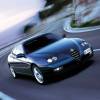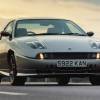
RAC sale – up to 33% off*
• Roadside cover from £5.29 a month†
• We get to most breakdowns in 60 mins or less
• Our patrols fix 4/5 breakdowns on the spot

By Jonathan Crouch
Introduction
The BRZ was a Subaru like no other before it, launched back in 2012 as part of a joint project with Toyota to breathe new life into an affordable rear-wheel drive coupe market that was once so vibrant. This car doesn't need to be concussively quick, for the real joy in driving it comes through the tactility of its controls and the purity of its handling. It's much rarer than its badge-engineered cousin, the Toyota GT86, but the pure rear-driven driving experience it offers is much the same.
Models
3 dr Coupe [2.0] - (sE, SE LUX)
History
Subaru has a performance heritage - but not in sportscars. The Fuji Heavy Industries brand earned its stripes in the forests of the World Rally Championship where its renown 4WD technology brought victories for legends of the sport like Richard Burns and Colin McRae. The roadgoing result was the Impreza WRX STi rally replica, loud, lary and appearing with big exhausts and a whaletail spoiler in a supermarket carpark near you next Friday night. But by the end of the 21st century's first decade, with the modern appetite for cars of this kind wearing thin amongst well-heeled enthusiasts, Subaru needed a purer approach to performance. It needed a car like this, the BRZ.
If you're after something that'll meet your need for speed, then this is about as far away from a rally replica as you're ever likely to get, its engineers proudly trumpeting the absence of 4WD, turbocharging and sophisticated electronics, ironically the very things that prior to the BRZ's launch in 2012 this Japanese brand had promoted to performance people for so many years. A change in philosophy then? Not really. It was more that the idea behind this car wasn't all Subaru's own. It came about as part of a joint project with Toyota, who wanted a return to the affordable sportscar market but didn't have the production or the development capacity for it.
Subaru provided both, creating what they saw as a sportscar in the classic sense - rear wheel drive with a front-engined layout, a low centre of gravity and a high-revving engine. Having helped to perfect the recipe, Toyota supplied the exterior design and production began at a purpose-built plant, both of this BRZ and its near-identical Toyota counterpart, the GT86. That car always had a much higher market profile but a unique after-sales package means that this BRZ often proved a better real world choice. It sold until 2021.
What You Get
For us, there was always something just that little bit more appealing about the looks of this BRZ in comparison to its Toyota GT86 stablemate - and we can't quite work out why, for apart from a slightly different front grille, the aesthetics of the two cars are exactly the same. Maybe it's just that we see Subaru as a slightly cooler brand. Whichever of the two you choose, the look is equally dynamic, with short front and rear overhangs, bolstered wheel arches and a muscular lean-forward stance that leaves drivers in no doubt of this car's low centre of gravity. It's all part of a purpose-driven mission emphasised by the hawk-eye-style headlights, the neat rear spoiler and distinctive 17-inch alloy pushed deep into the four corners of the body to improve the handling balance.
Even more important though, is the stuff you can't see. One of the fundamentals in the design of the BRZ was to keep weight down and, thanks to fastidious attention to engineering detail, this car manages to tip the scales at a mere 1220kg - that's less than something like a tiny Renaultsport Clio 200 hatch. Of course, there are reasons for this and one of them is that inside the cabin, heavyweight, high quality soft-touch plastics are mostly notable by their absence. So don't jump out of a Volkswagen Scirocco or Audi TT into one of these and expect to be impressed. For the same reason, noise insulation has been skimped on too, something you may not thank the designers for over a long motorway journey.
But then, this isn't a car you perambulate around in feeling superior about your slush-moulded dash top. And for us, what's right in this cabin far out-weighs any perceived lack of quality. For a start, the ergonomics are well nigh perfect, everything ideally placed and falling instantly to hand. There are lovely six-way adjustable sports seats and also knee-height padded panels on the door and the side of the centre console to keep you comfortable during hard cornering. The steering wheel's just the right size, untroubled by multi-function buttons that might distract you from power-sliding pleasure, and through it you view a large digital display complementing the clear analogue rev and speedo dials. This is a place where driver distractions have been kept to a minimum, the designers even using a specially developed low-gloss material finish for the dashboard to reduce glare on the windscreen.
Behind you, this being a 2+2 coupe, there are a pair of tiny seats - of the kind that motoring journalists without kids tend to moan about but which we always found quite useful, even if only to throw a jacket on to. And if you do need to use them, seating someone back here for a short trip is a lot more realistic than it would be in a comparable Audi TT or Peugeot RCZ. A lot of the time though, you'll probably have them folded flat, for doing that transforms the boot capacity from fairly compact - at 243-litres - to really very spacious, the total 1270-litre seats-flat capacity apparently enough to accommodate a trolley jack and four race-ready wheels and tyres: ideal for track days then. You also get a bit of under-floor storage if you get a car whose original owner unwisely did without a full sized spare wheel.
What You Pay
Please fill in the form here for an exact up-to-date information.
What to Look For
Most BRZ customers we surveyed absolutely loved their cars. It was hard to find too many complaints. There are things to look for though. The Boxer engine used has a history of leaking oil: apparently the seals on the camshafts inside the engine sometimes fail and cause oil to leak. In a few instances, there were also problems with the torque converter: this is there to improve the car's handling and turning ability by compensating for different wheel speeds. If the torque converter isn't working properly, on your test drive you might feel the wheels hopping in quicker turns and that could damage the drivetrain. Look for this on your test drive: it usually only affects very high mileage BRZs.
We've also come across reported problems with the water pump failing and leaking fluid, which could damage the engine. The car is also prone to faulty oxygen sensors, which will make it run poorly, so listen carefully when you fire up the engine. Another thing that might ruin the engine is a bad oil pump seal: Subaru oil pumps occasionally malfunction sooner than they should. If you see the oil pressure dropping while the engine temperature gauge figure is rising, that could be a sign of a defective oil pump. The final engine issue to be aware of is the fact that occasionally on BRZs, the aluminium head on the unit has been known to warp when subjected to heat - and that makes it possible for the gasket to fail and oil to leak out. If the vehicle has excessive oil consumption, this could be the reason. Away from engine issues, we've also heard tales of a failing ABS brake control module, so do an emergency stop on your test drive to see how the vehicle stops.
Otherwise, there's not much you'll need to worry about. Try and avoid models that have been thrashed about on track days - check the tyres with this in mind. Look carefully for any accident damage - a potential issue as this sportscar will have been driven hard by most previous owners. Even if the car looks OK, it's worth getting an HPI check done to make sure that no horrors are lurking beneath the apparently pristine panel work. Other common issues include rust on the door pillars (which will be covered by the warranty), water in the rear lights and scratched alloy wheels. Insist of course on a full service history.
Replacement Parts
(approx based on a 2016 BRZ) An air filter will be priced in the £8 bracket, an oil filter will sit in the £4 bracket and a thermostat will be around £11. The front brake discs we came across sat in the £31 to £75 bracket. The rear brake discs we came across sat in the £60 to £108 bracket. Front brake pads are in the £19 bracket for a set; for rear pads, it's in the £27 to £47 bracket. Wiper blades cost in the £2 to £17 bracket. A pollen filter's in the £10-£38 bracket.
On the Road
Apparently, the BRZ's name tells you everything you need to know about this car. 'B' stands for 'Boxer engine', 'R' for 'Rear wheel drive' and 'Z' for 'Zenith' - the ultimate in affordable thrills. Is that what this is? From an early glance at the stats, you might wonder. There's nothing especially startling here, the 2.0-litre flat-four engine producing 197bhp and 205Nm of torque, enough to get you to sixty from rest in 7.6s on the way to a top speed of 143mph. Plenty of comparably priced hot hatches from the 2012-2021 period can match or beat that. But none of them can deliver the driving experience on offer from this Subaru.
It's a normally aspirated, front-engined, rear-wheel drive coupe. Let's start with that. For a keen driver, the recipe doesn't get much purer. Plumb in a boxer engine that helps it to a centre of gravity lower than a Ferrari 458, add a proper mechanical limited slip differential and offer a six-speed manual gearbox with three beautifully spaced aluminium-plated pedals in the footwell and you have what most would agree is a very good start. Even from this point it would have been easy to get things wrong. But Subaru didn't. On the contrary, the BRZ is so right in so many ways it's almost as if the hand of Porsche has worked upon it. There's a simplicity to its controls, a delicacy and tactility to the steering and the pedals that offer the keen driver so much.
And you're going to need to be a keen driver to really enjoy this car. The gruffily engine note from start-up sounds suitably Subaru and, true to form, you really have to work this Boxer unit to make the most of the performance, for not a lot happens below 4,000rpm. Even the aural experience is a bit disappointing. Which means that if you merely take this car for a quick test drive around the block, it won't really feel very fast at all and you'll get out wondering what the fuss was all about.
Persevere. Get into the upper reaches of the rev range and things begin to change. Not only does the torque start to make itself felt but a sound generator cuts in to lift the engine roar so much that you'll be tempted to turn down the stereo to hear it. There's not quite enough grunt to powerslide around like you would in a more powerful coupe from this period, say a Nissan 370Z, but an intentional decision to use narrow skinny tyres means that, should you turn off the three-stage stability control system (or even put it in its interim 'Sport' setting) the rear end is never too far away from breaking traction. Get used to the feeling and you'll find that every empty corner, every deserted roundabout is a blank canvas - an opportunity to prove your skills, especially if it happens to be a little damp.
This car, you see, instils such confidence. Arguably the best electric power steering system in the world from this period always keeps you in touch with what the front wheels are doing and the grip you have available. And one of the best manual transmissions anywhere encourages you to snick up and down the 6-speed 'box just for the fun of it - though some original buyers spoiled things by selecting the optional 6-speed paddle-shift automatic. A mechanical limit slip diff just like BMW fits to its M cars fires you from bend to bend without unwanted wheelspin mid-corner. And should you go a little too far, there's always the VSA stability control system to haul you back. Brilliant.
Overall
Let's be clear about this: the Subaru BRZ is a very special car. Better indeed than any true World Rally Blue Subaru optimist could hope to expect. It has a beautiful simplicity that speaks of paring back to the essence of driving purity, including just enough of what you need and nothing that you don't. Of course, the automotive Philistine will probably look upon it as a car that will be out-dragged by a hot Clio, while costing a good deal more. They may even go on to note that it runs on the same skinny tyres as a Toyota Prius, before perhaps concluding that this model is all hype and no substance.
But nothing could be further from the truth. Like its Toyota GT86 design stablemate, the BRZ was a hero car for our times, one that rewarded the properly talented driver without making the less proficient feel clumsy or unworthy. Of course, you've to pay for your pleasures. The cabin could feel more luxurious, the engine could be cleaner and more refined and the whole package needs to be thrashed before it'll give of its best. But correcting these things would add weight and dilute the very essence of this car. We'll take it as it is then. Try one and you might well agree.

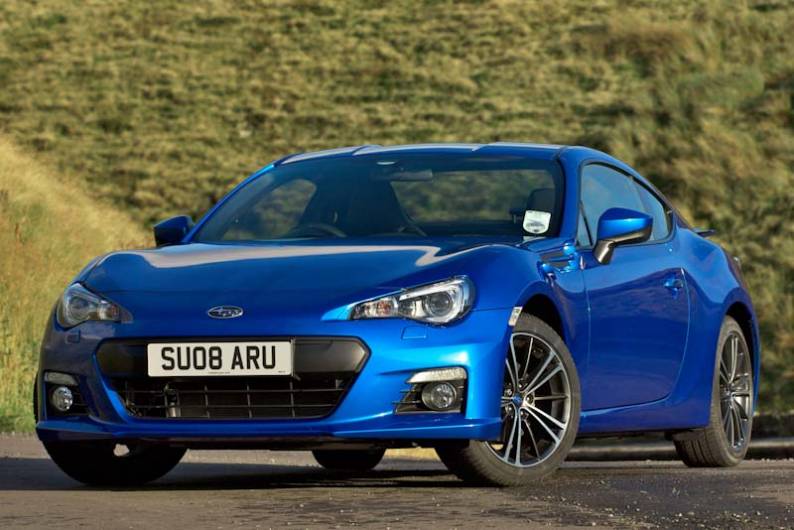

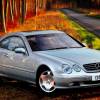
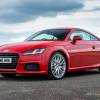
![Mercedes-Benz C-Class Coupe [C205] (2015 - 2023) used car review](https://d1ix0byejyn2u7.cloudfront.net/drive/images/made/drive/images/remote/https_d2yv47kjv2gmpz.cloudfront.net/filestore/7/3/9/1_a324d3f18a9dd9e/c24f4b8b3f0288f7d409e5487eb7e321/1937_383c68ac7940ce0_100_100_70_c1_c_c.jpg)
